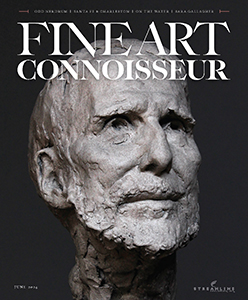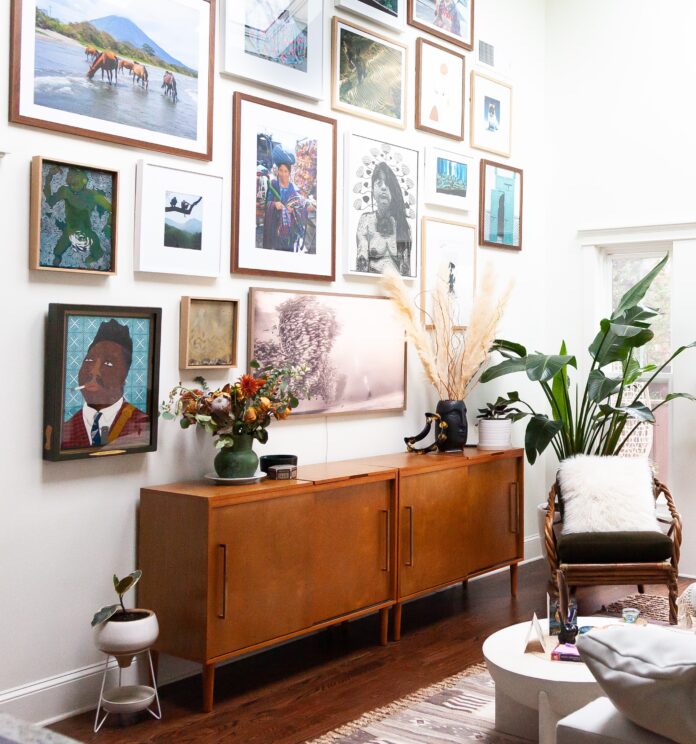From the Fine Art Connoisseur May/June 2024 Editor’s Note:
A Changing Art Market
Recently I have been reviewing this magazine’s back issues, and I am struck by how often — before the pandemic — we covered record-breaking prices obtained at auction for masterworks by the likes of Pablo Picasso, Mark Rothko, and Lucian Freud. We’re talking $150 million here, $100 million there. 
I have not noticed until now how significantly those stories have faded. Occasionally we learn through the art press that a certain billionaire or oligarch has acquired one of these masterworks, but their sales are now conducted privately rather than in public auctions, though still most likely via Sotheby’s or Christie’s in New York City. There is nothing illegal about this, but it does make the auction scene less exciting and visible than it once was.
More importantly, it means that auction catalogues, in most departments, are getting thinner. Staffs are being pruned, too, often with the experts being reassigned to the “private sale” divisions, where they essentially become high-end bank officers who happen to know a lot about art. Again, none of this is illegal, yet it erodes the visibility of art collecting nationwide, especially to the upper middle class that has historically sustained the art market. Those were folks who had some cash to burn and some homes to decorate, who spent weekend afternoons prowling the showrooms looking for $50,000 paintings to acquire the following week at auction.
As Sotheby’s and Christie’s have shed this function, much of the slack has been taken up by such regional auctioneers as Freeman’s (Philadelphia) and Hindman (Chicago) who, no surprise, have just merged. Now there are excellent auctioneers nationwide handling artworks that the “big boys” no longer bother with, and that’s fine, but the media is not interested in covering middling sale prices fetched in cities that are not particularly glamorous.
One result is that art collecting now strikes many middle-class Americans as even more exclusive — and less accessible — than ever before. We should particularly be concerned about people under 40 who have no history of buying “real” art and are now looking to adorn their first proper home. They are reading less about art in the media, and they may not have noticed that storefront art galleries are disappearing in many communities due to the difficulties that all retailers face in getting foot traffic. Art collecting, then, may not strike them as a viable pursuit, or perhaps the only option visible is to buy what the British call “cheap and cheerful” — contemporary art made by students or folks selling it at festivals.
The readers of Fine Art Connoisseur know better. We realize that galleries, auction houses, and artist’s studios nationwide are still out there, full of fascinating artworks that “real” people can afford. But not everyone reads Fine Art Connoisseur (yet), so let’s all spread the word, please. Visiting your local art museum regularly is a great way to train the eye, just one reason this magazine highlights exhibitions you should see.
Do get out there and look as widely as you can — at museums, and also in your region’s galleries and auction houses. The more you see, the more likely you will fall in love with something you must bring home.
What are your thoughts? Share your letter to the Editor below in the comments.
Download the current issue of Fine Art Connoisseur here.
Sign up to receive Fine Art Today, the free weekly e-newsletter from
Fine Art Connoisseur magazine.









You wrote, “We realize that galleries, auction houses, and artist’s studios nationwide are still out there, full of fascinating artworks that “real” people can afford” and later, “Art collecting, then, may not strike them as a viable pursuit, or perhaps the only option visible is to buy what the British call “cheap and cheerful” — contemporary art made by students or folks selling it at festivals.“ This strikes discord insinuating that art purchased at festivals is lesser than what can be found in auction houses, galleries and artist studios. Many professional, collected artists participate in festivals. As far as what, “real people” may buy at a festival, like anything else in life, beauty is in the eye of the beholder and the true value is assigned by the one making the purchase based on a response to the art and the artist. Your article sounds as though art should only be purchased as an investment rather than something that brings joy and beauty into a home or commercial space. Completely dusted with a coating of snobbery, your words may repel some of those, “real people”, of which you are concerned may buy something, cheap and cheerful”, at a festival.
Amen.
I am an artist.
Mr.Trippi strikes me as insufferable.
He must struggle with the “real” world on a minute-by-minute basis.
I suggest he watch (or re-watch) HBO’s excellent 2018 doc “The Price of Everything”. I haven’t seen it in awhile so
he may actually be IN it…. pontificating
away.
Or perhaps it will him help develop a different perspective.
And…bless his heart.